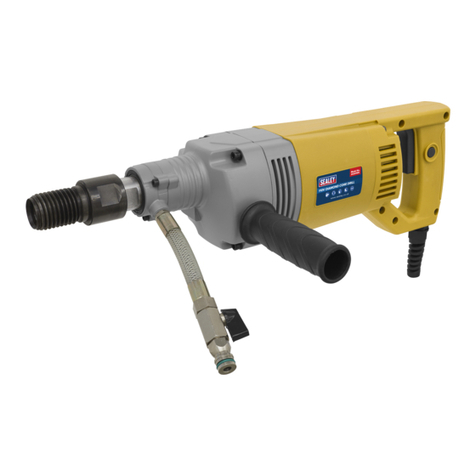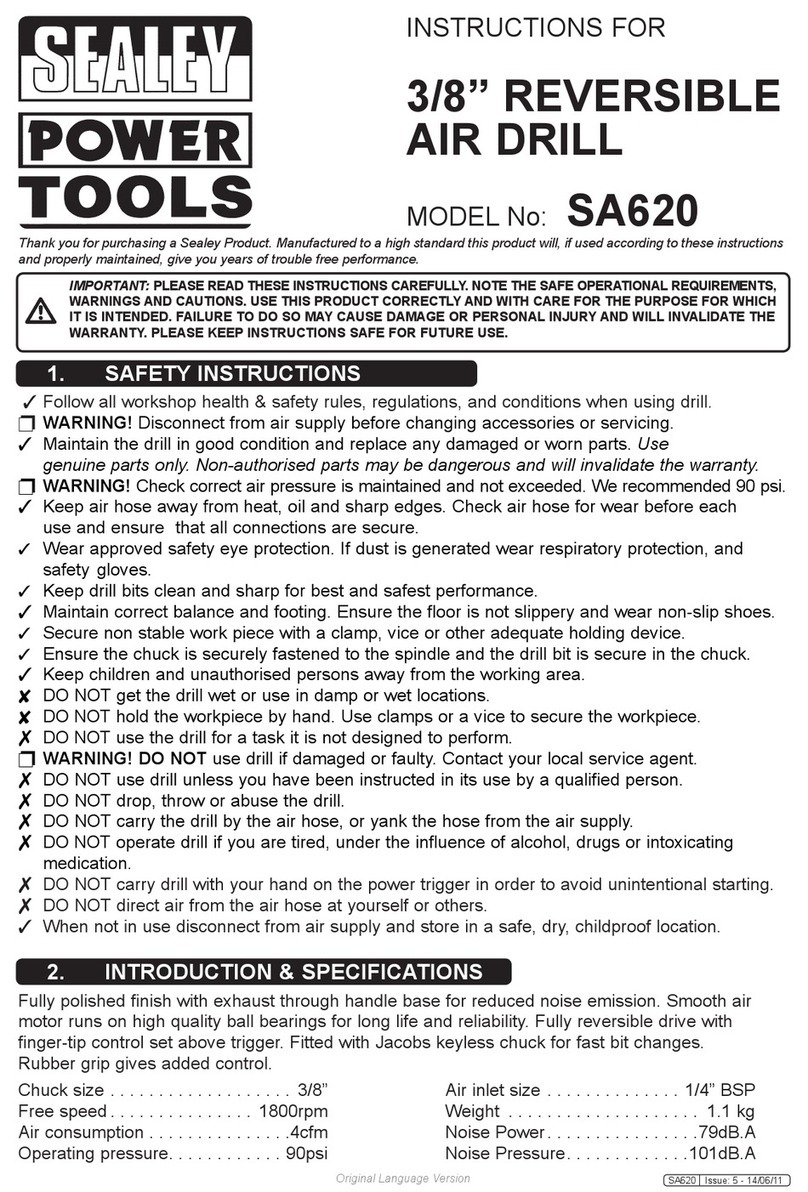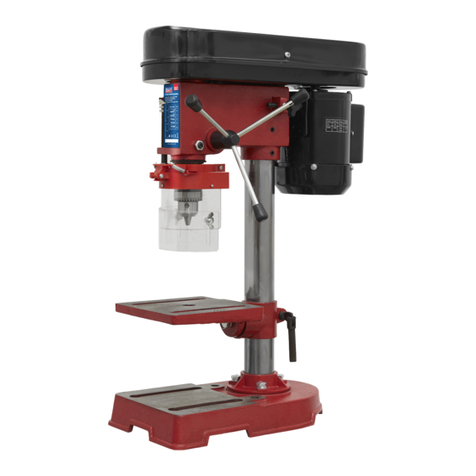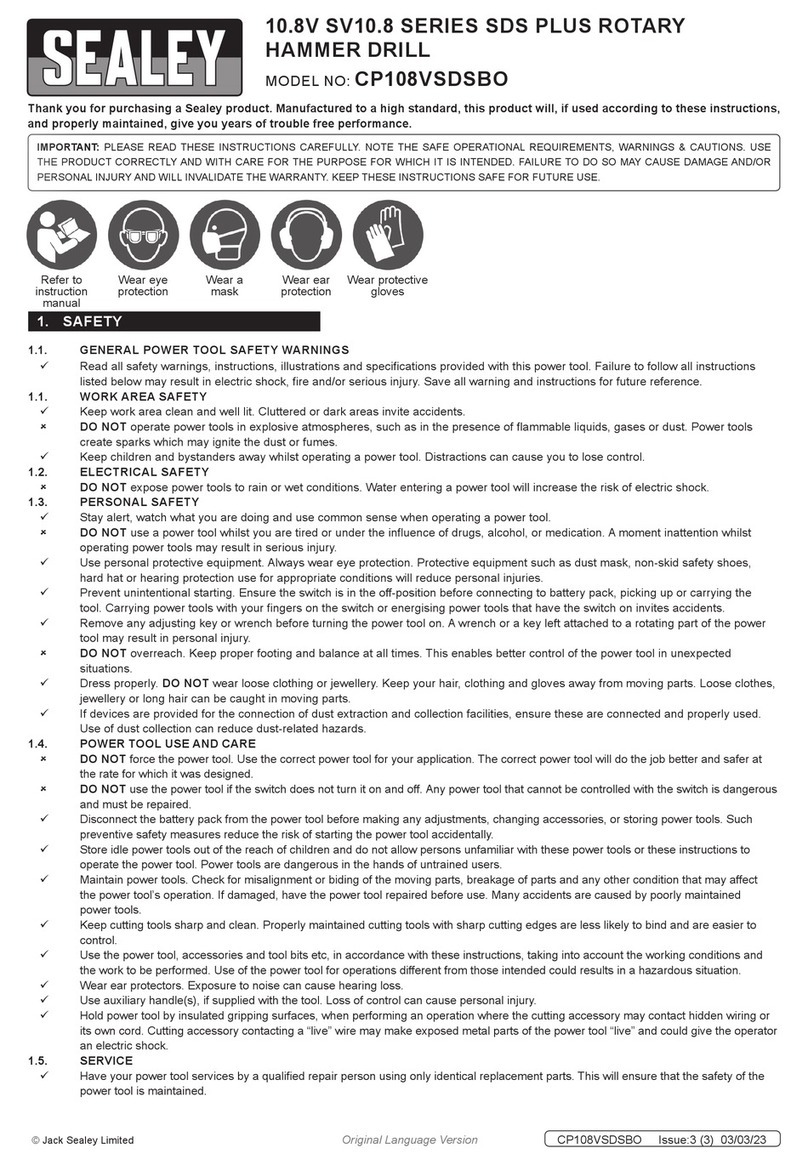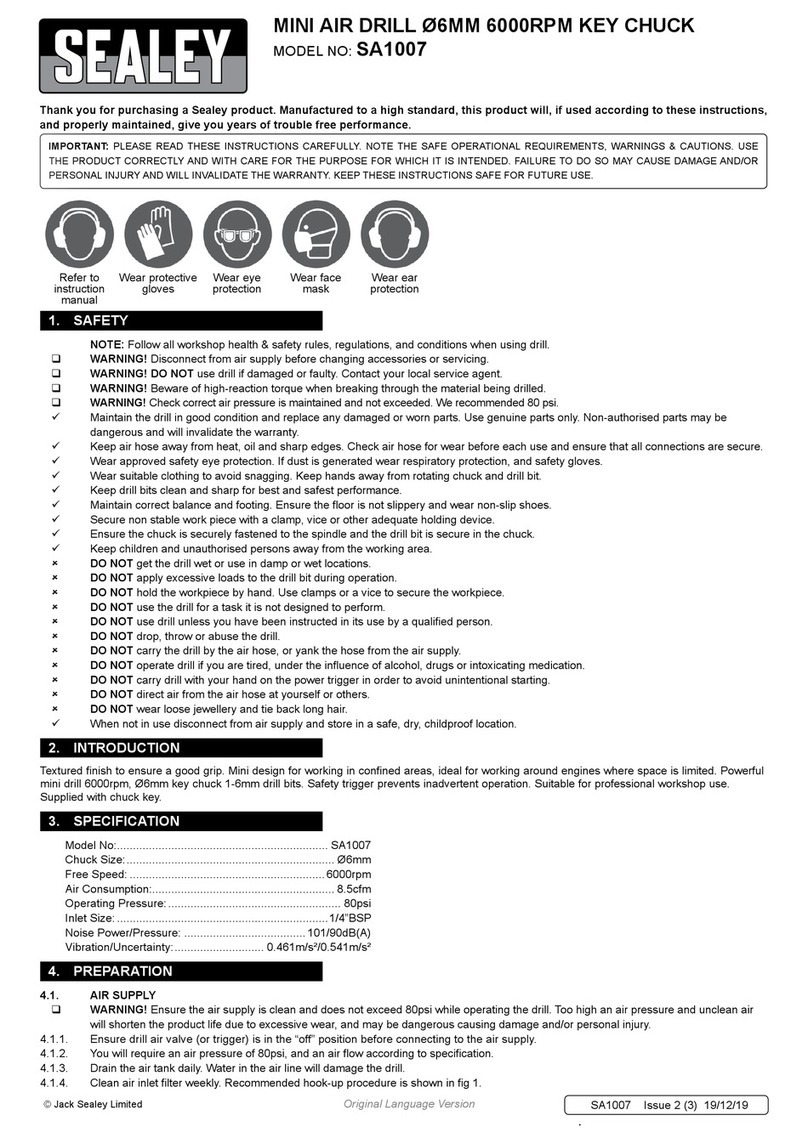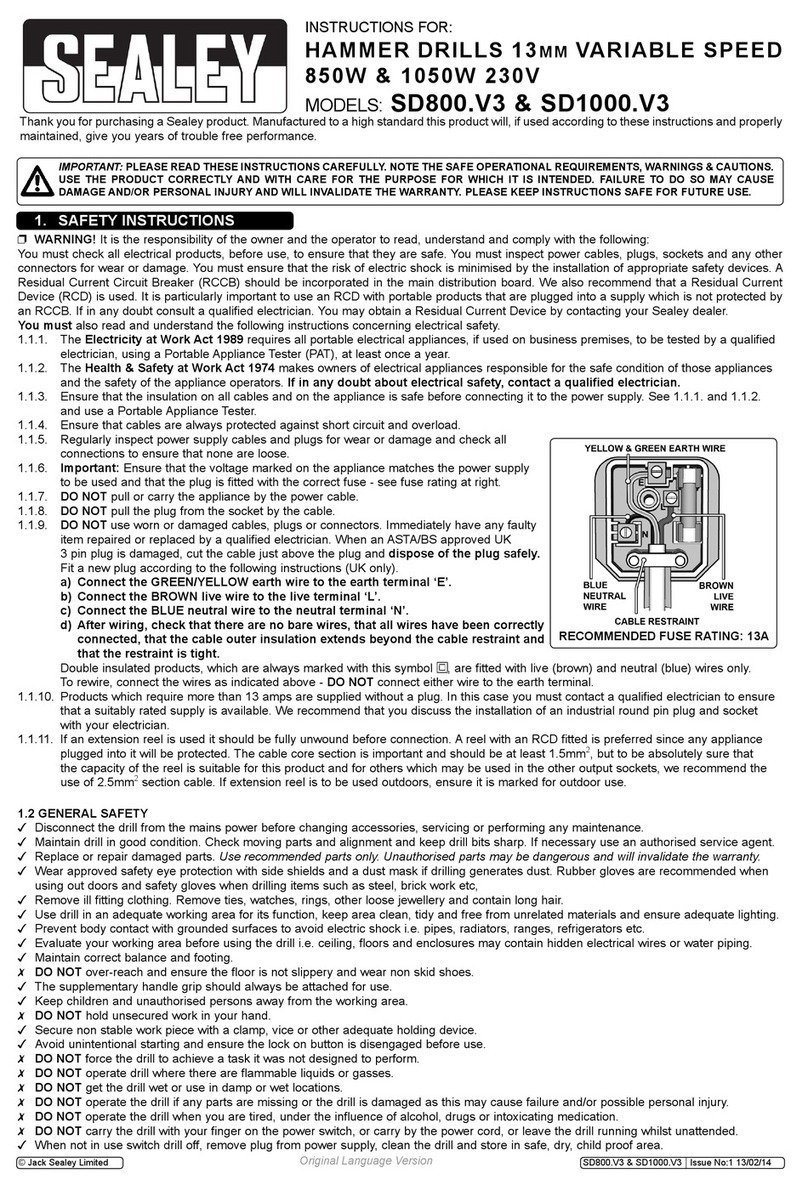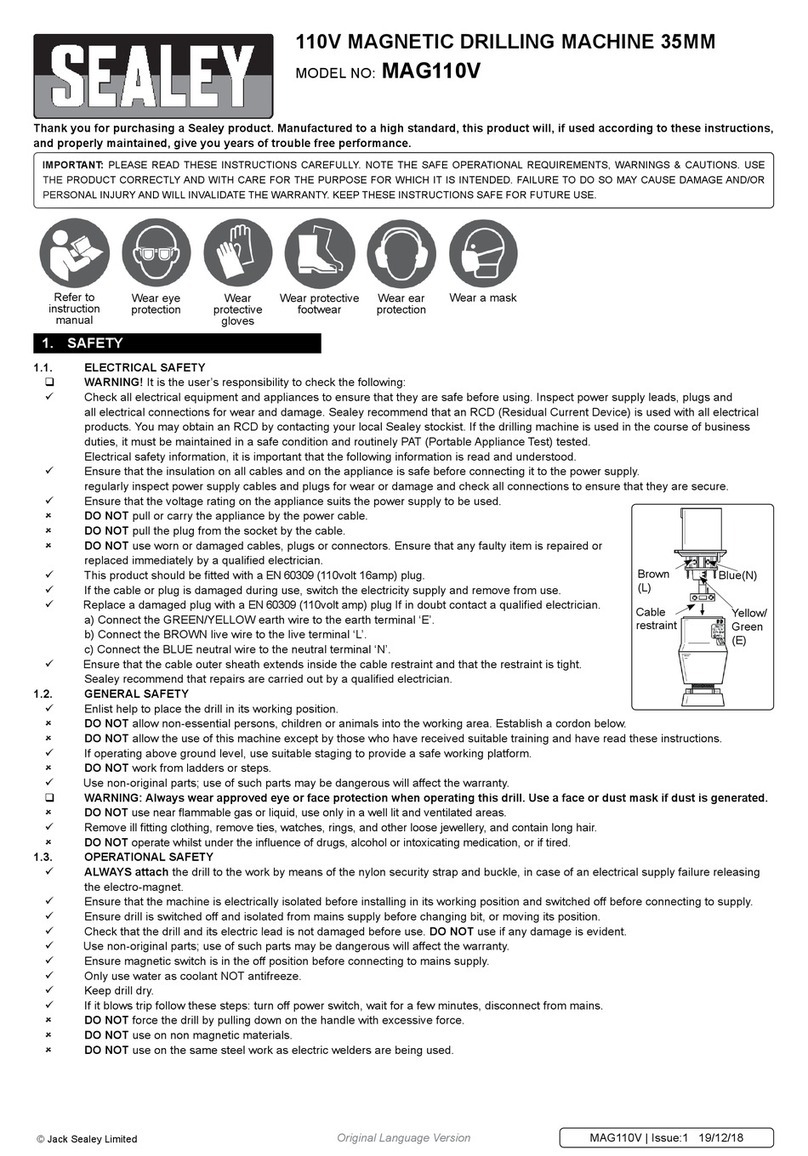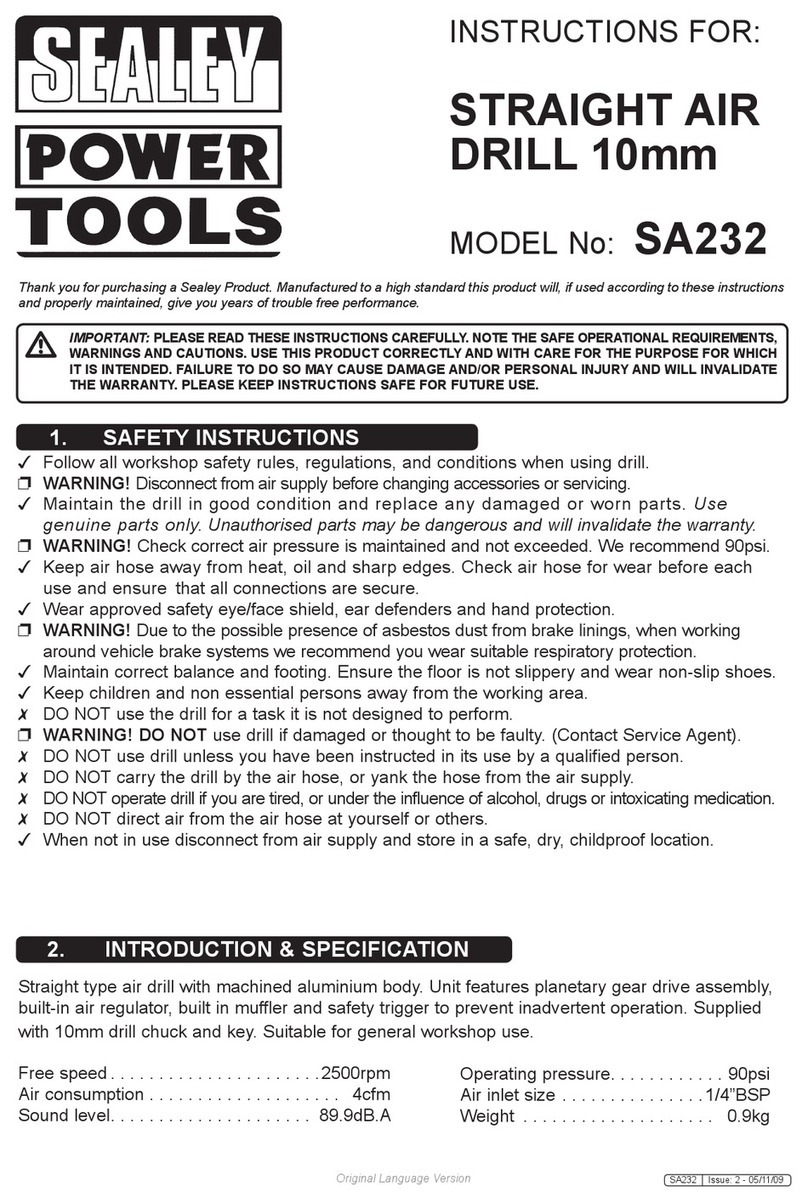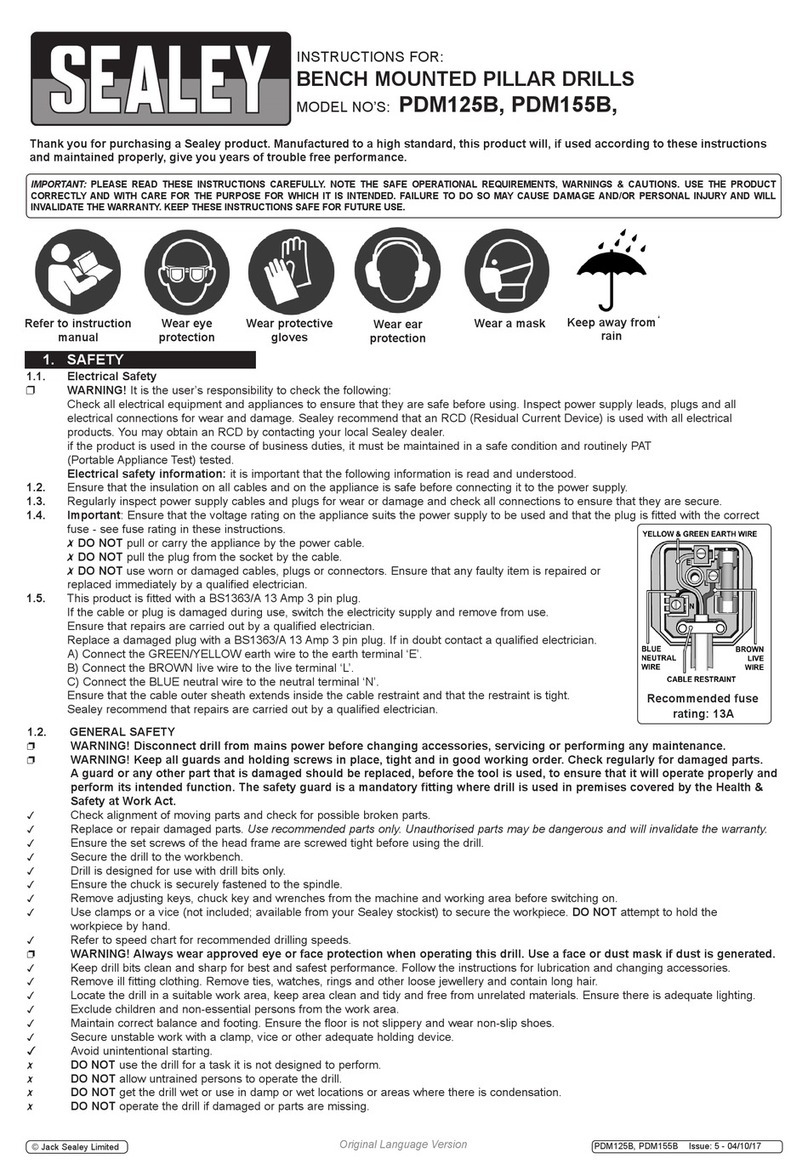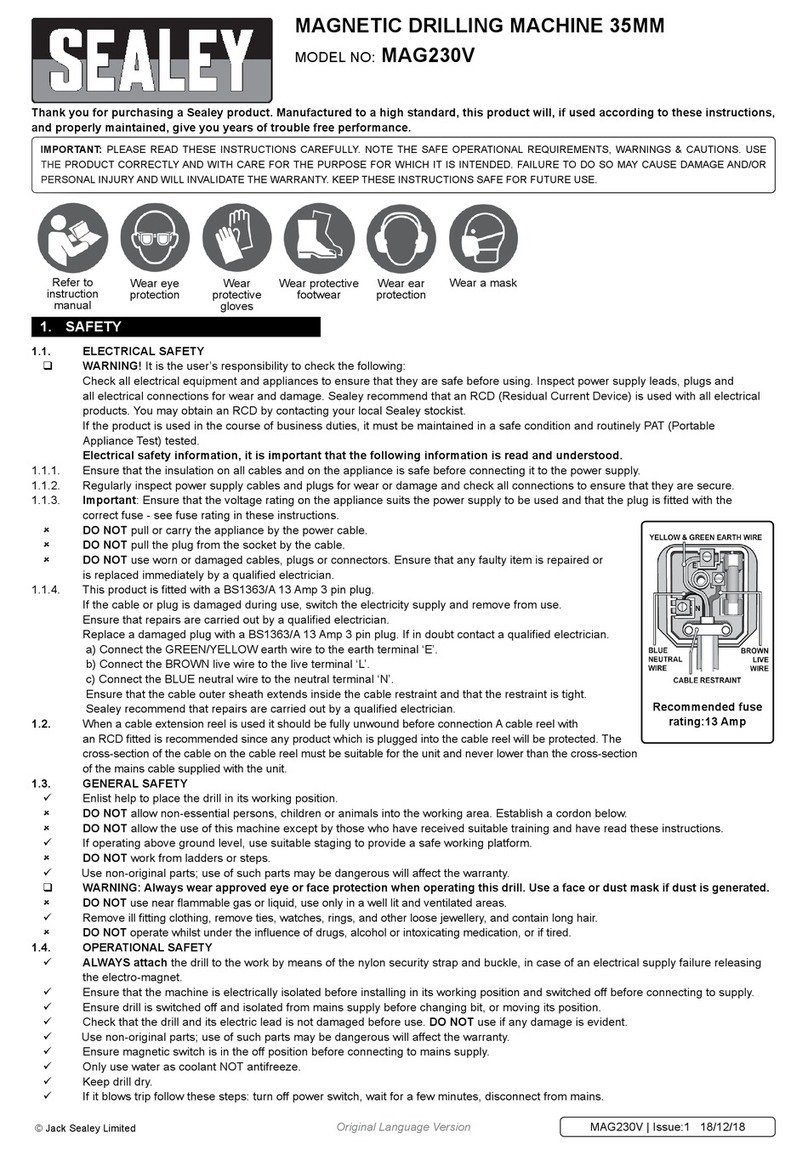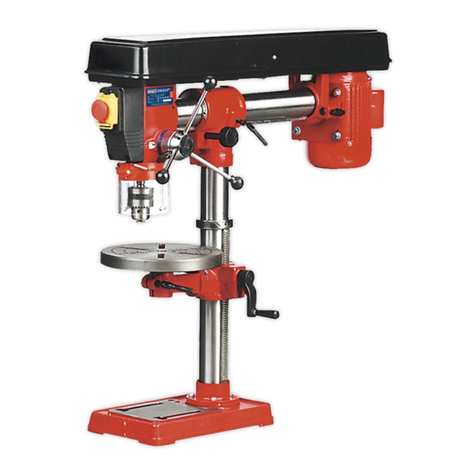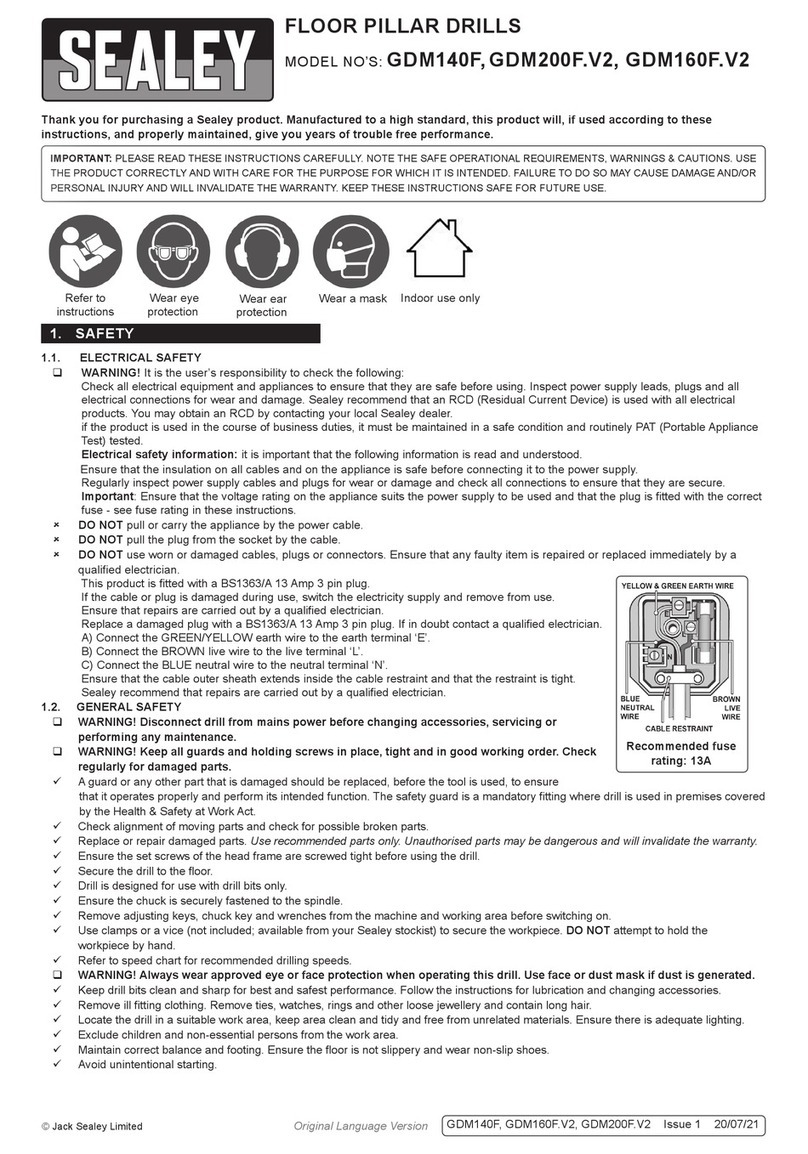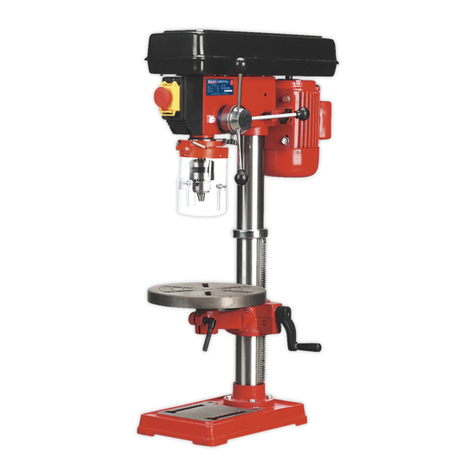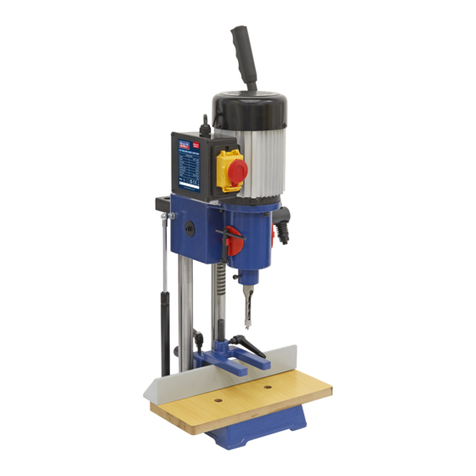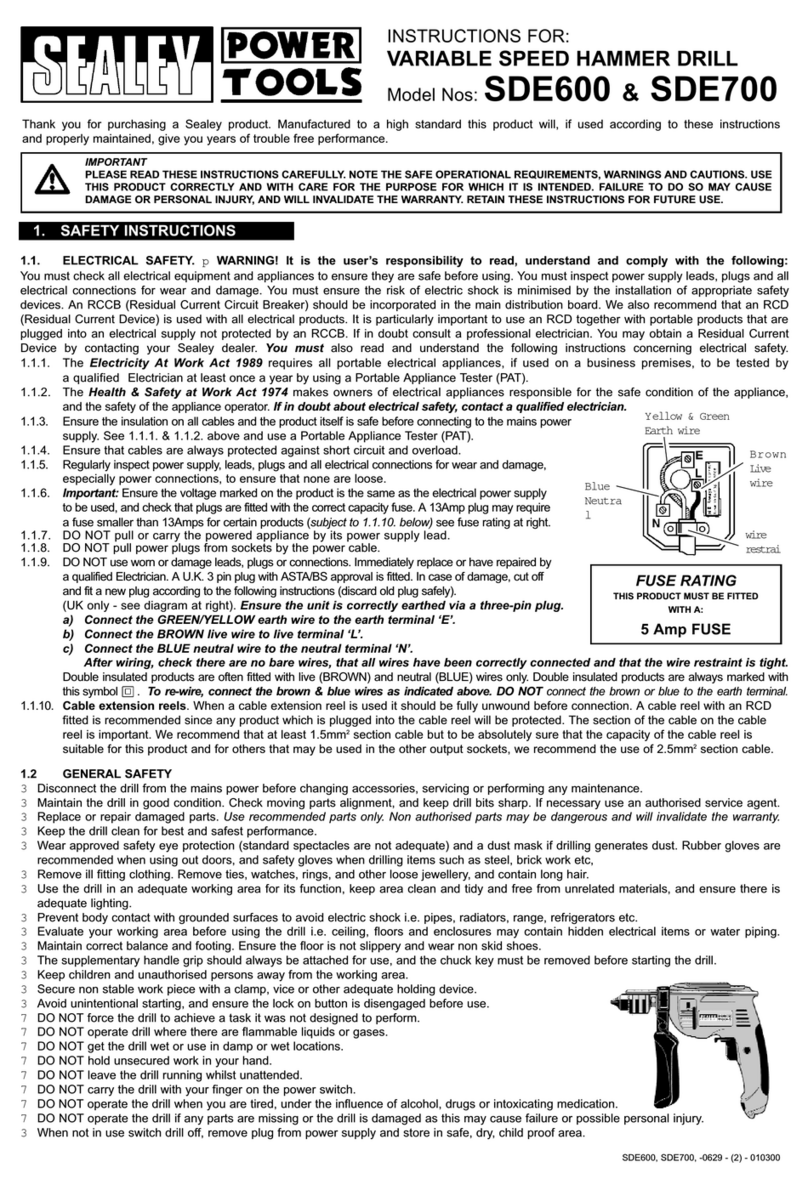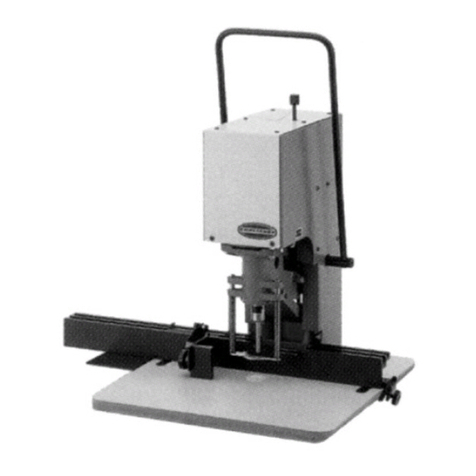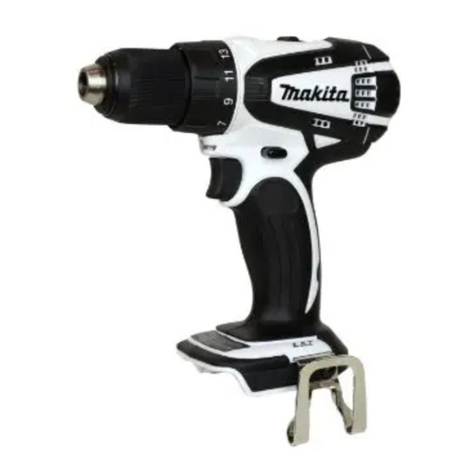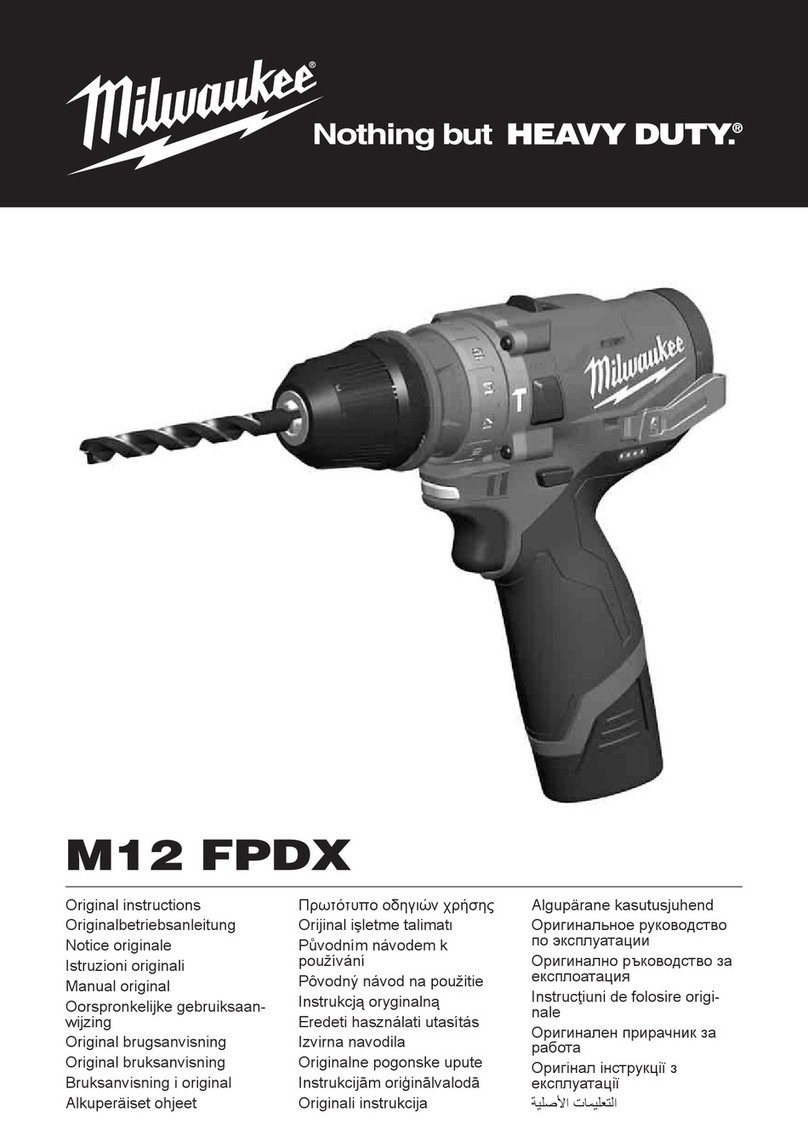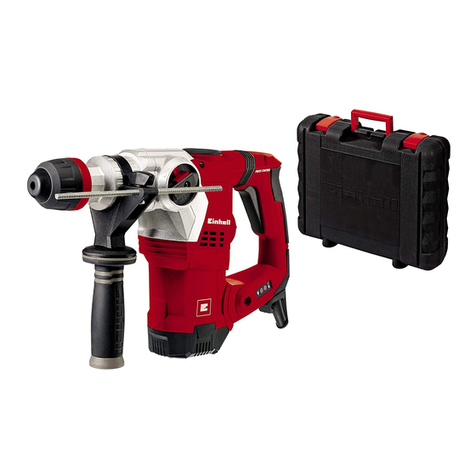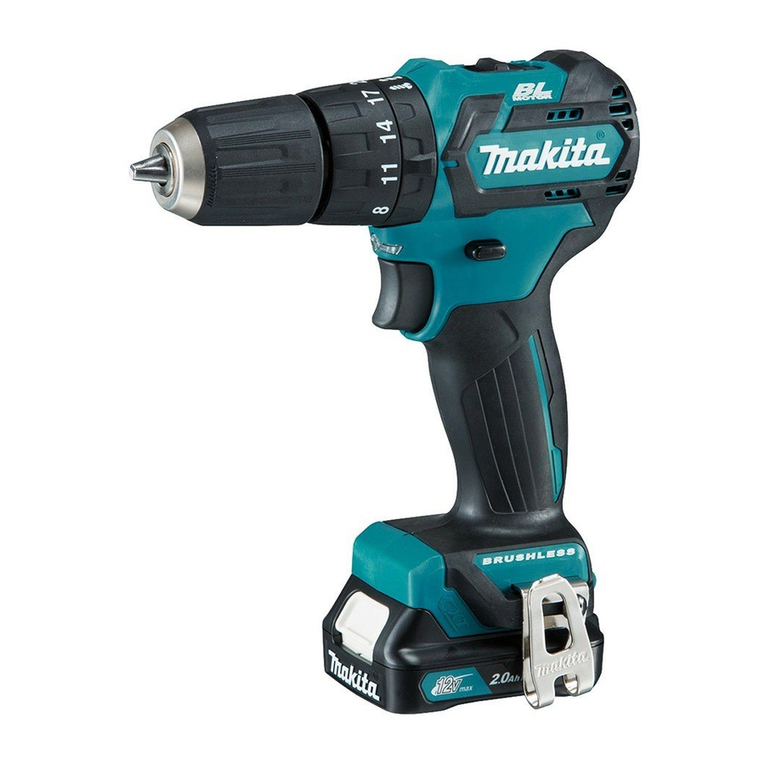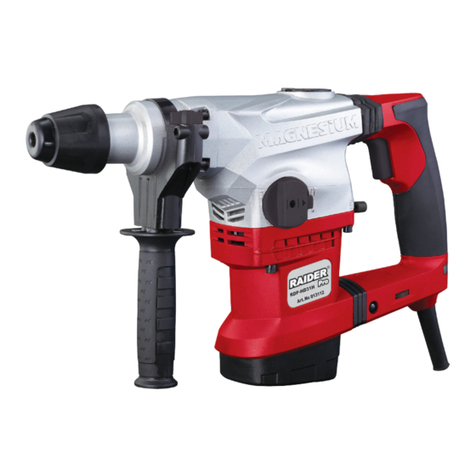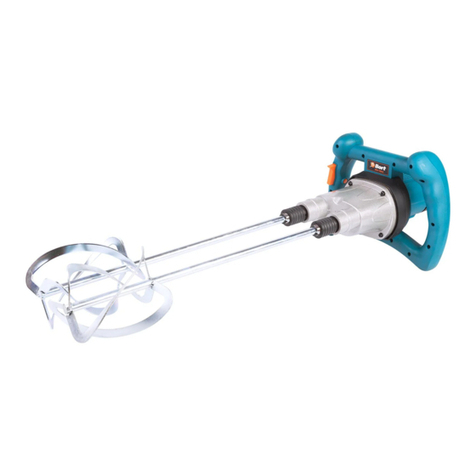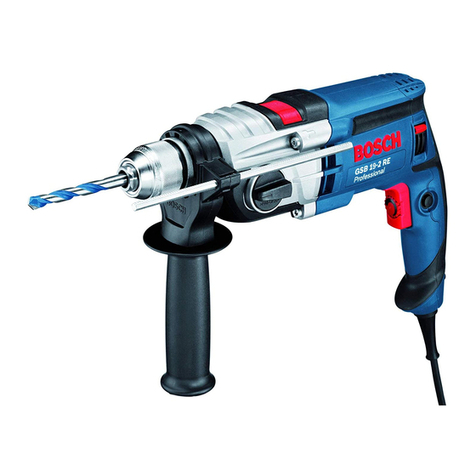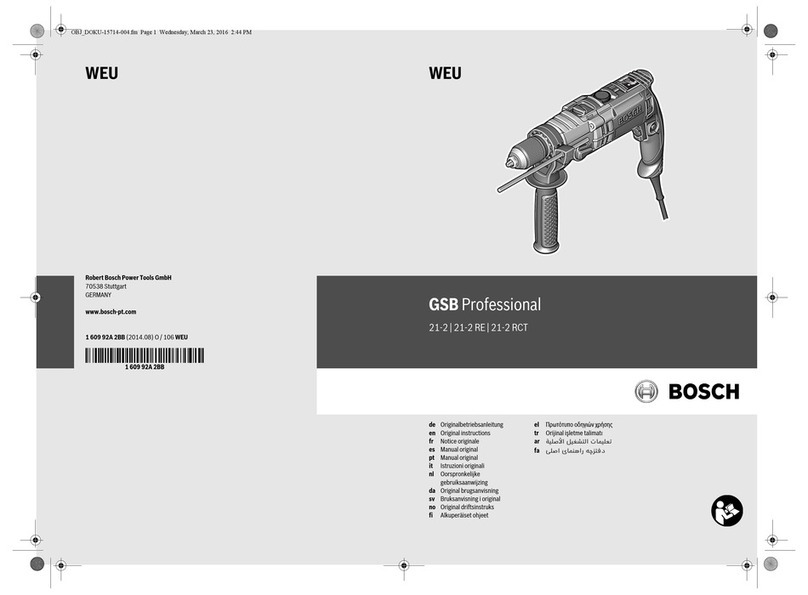
3. SPECIFICATION
Model no:................................................................SA27.V3
Chuck size: ............................................................... Ø13mm
Free speed:................................................................700rpm
Air consumption: ............................................................4cfm
Operating pressure: ...................................................... 90psi
Inlet size:...................................................................1/4”BSP
Weight:..........................................................................1.4kg
Noisepower/pressure: .......................................100/91dB(A)
Vibration/uncertainty: .........................................0.89/1.5m/s²
4. PREPARATION
4.1. AIR SUPPLY
WARNING!Ensuretheairsupplyiscleananddoesnotexceed90psiwhileoperatingthedrill.
Too high an air pressure and unclean air will cause excessive wear, and may be dangerous,
causingdamageand/orpersonalinjury.
4.1.1. Recommendedhook-upprocedureisshowning1.
4.1.2. Ensure the drill air valve (or trigger) is not depressed before connecting to the air supply.
4.1.3. Youwillrequireanairpressurebetween70-90psi,andanairowaccordingtothespecicationabove.
4.1.4. Drain the air tank daily. Water in the air line will damage the drill and invalidate your warranty.
4.1.5. Cleanairinletlterweekly.
4.1.6. Line pressure should be increased to compensate for unusually long air hoses (over 8 metres).
4.1.7. Theminimumhosediametershouldbe1/4”I.D.andttingsmusthavethesameinsidedimensions.
4.1.8. Keep hose away from heat, oil and sharp edges. Check hoses for wear, and make certain that all
connections are secure.
4.2. COUPLINGS
4.2.1. Vibration may cause failure if a quick change coupling is connected directly to the air drill.
Toovercomethis,connectaleaderhose-SealeymodelnumberAH2RorAH2R/38-tothedrill.
Aquickchangecouplingmaythenbeusedtoconnecttheleaderhosetotheairlinerecoilhose.Seegs.1&2.
4.3. FITTING HANDLE
4.3.1. Slide the split brass ring over the chuck and onto the main black body of the drill. Squeeze the split thread together and screw the
handle partially onto the ring. Move the handle to your desired orientation and continue to screw the handle until it is locked in
position.
5. OPERATION
WARNING! Ensure you read, understand and apply safety instructions before use.
5.1. DRILL BIT FITTING
WARNING! Unplug from the air supply before placing bit into chuck.
5.1.1. Regularly check the drill bit and always change if worn, cracked or otherwise damaged.
5.1.2. Openorclosethechuckjaws(g3.1)toapointwheretheopeningisslightlylargerthanthedrillortoolbittobeused.Insertthedrill
bitintothechuckasfarasitwillgo.Rotatetheforwardsectionofthechuck(g3.2)clockwise,inordertosecurethedrillbit.
5.1.3. Connectairsupplytodrill.Squeezethetrigger(g3.3)tocheckthatthedrillisworkingcorrectlybeforestartingwork.
8DO NOT allow drill to run freely for an extended period of time as this will shorten the life of bearings.
5.2. DRILLING INSTRUCTIONS.
WARNING!Ensureyouwearapprovedsafetygogglesandanyothersafetyitemrequiredforthejob.Ensurechuckislockedbefore
using the drill. Also ensure that all other safety requirements are followed.
5.2.1. Connect drill to air supply.
5.2.2. For drilling purposes ensure the drill is turning in the forward direction by
checkingthattheleveradjacenttothetriggerisnexttothe
forwardsymbol(F).Ifnot,iptheleverovertotheforwardposition.
5.2.3. Holdtoolrmlyandplacethebittiptothepointtobedrilled.
5.2.4. Depress the trigger to start drill. Move the drill bit into the work piece
applying only enough pressure to keep the bit cutting. DO NOT
force or apply side pressure to elongate the hole.
5.2.5. If the material to be drilled is free standing it should be secured in a vice
or with clamps to keep it from turning as the drill bit rotates.
5.2.6. When drilling metals, use a light oil on the drill bit to keep it from
overheating. Oil will prolong life of bit and improve the drilling action.
5.2.7. For hard smooth surfaces use a centre punch to mark desired hole
location. This will prevent bit from slipping as your start to drill.
5.2.8. Apilotholemaybenecessarytoassistthenaldrillsizethroughthe
workpiece.Lockapilotdrill(smallersizedrillthanthenished
holesize)intothechuckanddrillapilotholeinthemiddleofthecentrepunchmarkwherenalholeistobedrilled.Insertthenal
sizedbitinchuck.Holddrillrmlyandplacethebitattheentranceofthepilotholeanddepressthetrigger.
WARNING! Be prepared for drill binding on break through. When these situations occur the drill has a tendency to grab and kick in the
oppositedirectionwhichcouldcauselossofcontrol.Ifyouarenotprepared,thislossofcontrolcanresultindamageand/orpersonal
injury.
5.2.9. Ifthebitjamsintheworkpieceorifthedrillstalls,releasethetriggerswitchimmediately.Removethebitfromtheworkpieceand
determinethereasonforjamming.Itmaybenecessarytoreversethedirectionofrotationbymovingtheleveradjacenttothetrigger
tothereverse(R)position(thereverseactionisalsousefulforundoingxings).
fig.1
fig.2
fig.3
Original Language Version
© Jack Sealey Limited SA27.V3Issue:1-27/11/18
